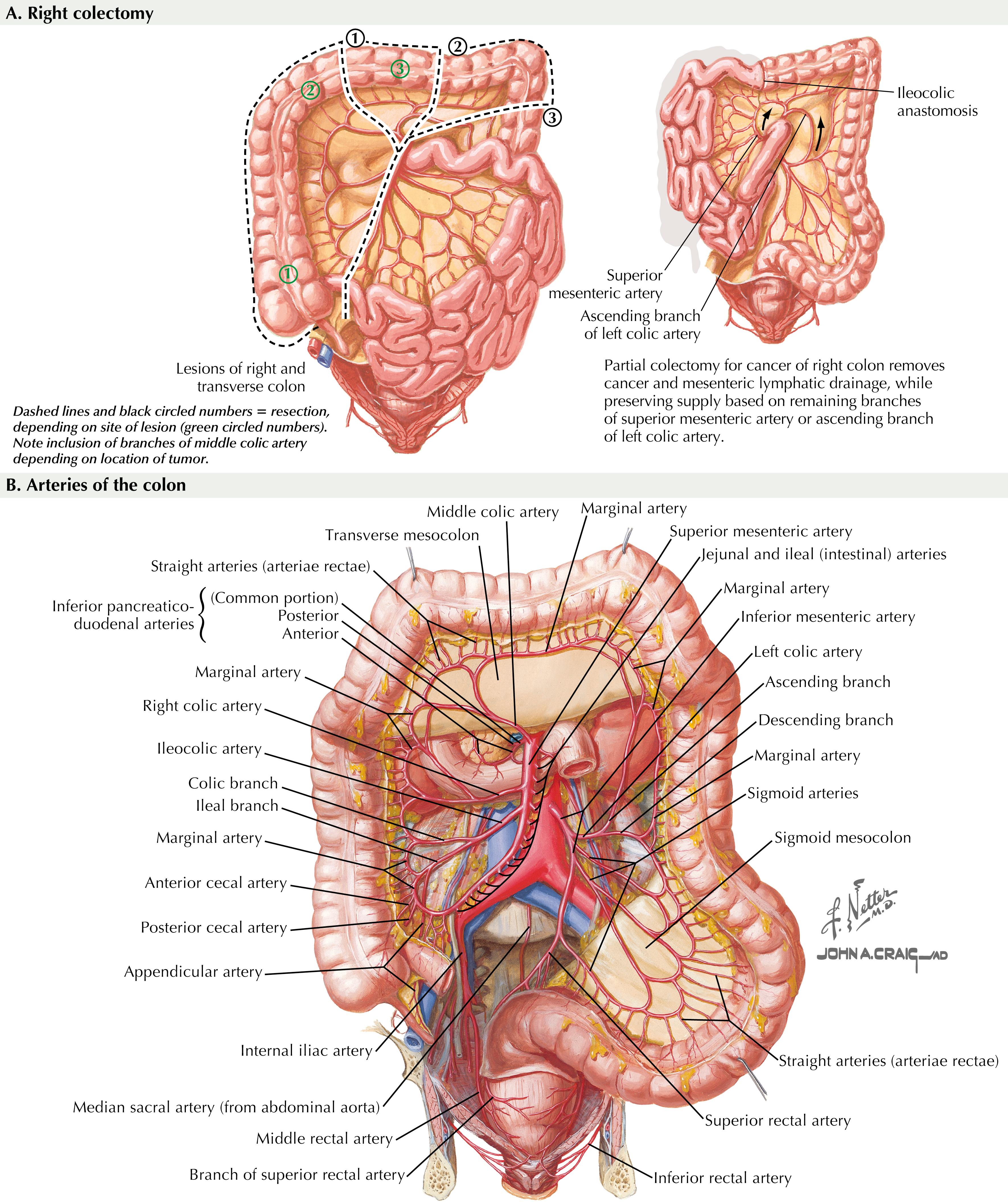Physical Address
304 North Cardinal St.
Dorchester Center, MA 02124
A right colectomy is performed to treat a variety of pathologies. Common indications include an unresectable polyp, colon cancer, and Crohn’s disease of the terminal ileum. Ischemia, volvulus, and malignant lesions of the appendix or terminal ileum may also be indications. Resection of the terminal ileum and cecum is common to all these procedures. The distal extent of the right hemicolectomy varies, depending on the indication, oncologic principles, and adequacy of perfusion to the right or transverse colon. Laparoscopic approaches are the current standard of care, and with careful patient selection and precise operative technique, this approach improves patient recovery, using smaller incisions with a resulting decrease in patient discomfort and shorter hospital stay.
Before making an incision, either laparoscopic or open, the surgeon must understand the relationship between surface anatomy and the abdominal anatomy ( Fig. 27.1A ). For example, in the morbidly obese patient, surface anatomy such as the location of the umbilicus may be greatly altered. The umbilicus may reach down to the pubis and overlie a large pannus, which may distort normal relationships with internal anatomy. Additionally, in elderly patients, the cecum is often in the right upper quadrant as the lateral connective tissue loses its integrity over time.

The right colon is attached by its retroperitoneal and lateral attachments, the ileocolic and middle colic arteries. Attachments at the middle colic and lesser sac are typically the most tethered portion of the operation, often making isolation of the middle colic vessels the most difficult part of the case ( Fig. 27.1B ). For this reason, and the fact the transverse mesocolon is often short, laparoscopic extraction incisions can be made over the middle colic arteries.
The middle colic arteries typically lie approximately midway between the xiphoid process and the umbilicus in a non-obese patient. The inferior extent of the procedure (i.e., inferior dissection of terminal ileum and cecum) is typically only centimeters below the umbilicus and medial to the anterior superior iliac spine. Therefore, an open right colectomy can often be performed through a relatively small periumbilical midline or right-sided transverse incision in a thin patient.
Different surgical approaches to the right colon have been described and include medial-to-lateral, lateral-to-medial, inferior-to-superior, and superior-to-inferior. Varying the approach can allow for a safe, oncologically appropriate operation, depending on body habitus and pathology.
Become a Clinical Tree membership for Full access and enjoy Unlimited articles
If you are a member. Log in here